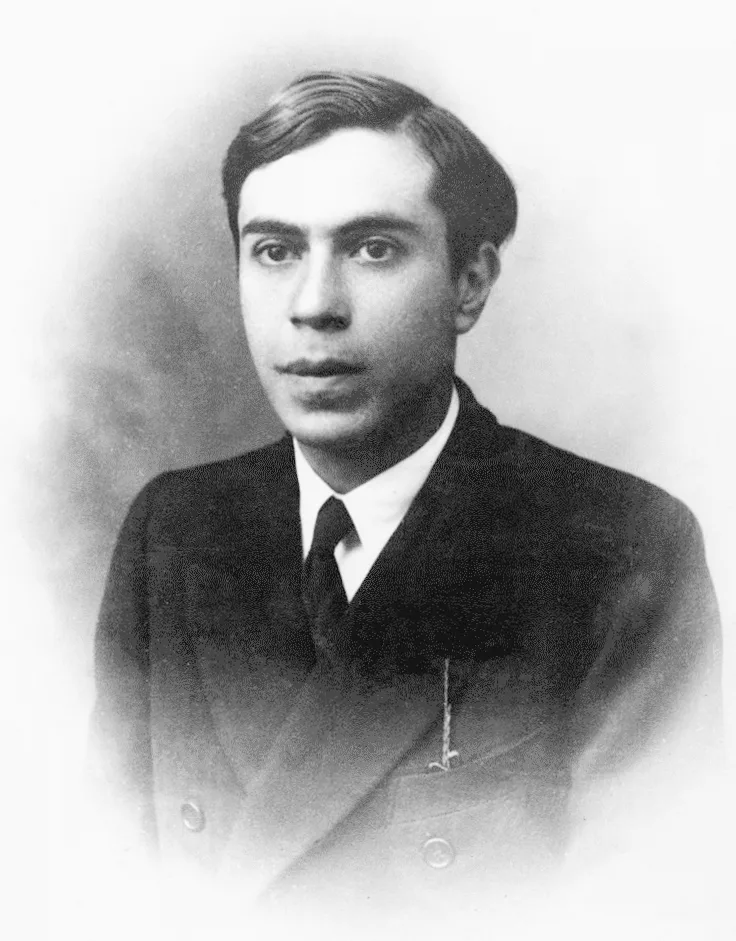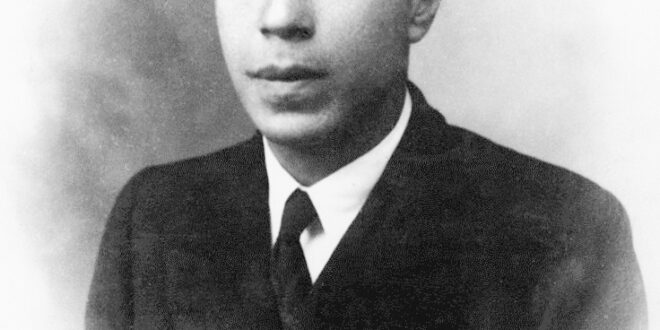
Background
Ettore Majorana was born in 1906 and disappeared in 1938 at the age of 32, subsequent to acquiring a ticket for a voyage from Palermo to Naples. Majorana exhibited prodigious intellectual prowess from the tender age. Although my personal knowledge in the realm of theoretical physics is limited, yet his Wikipedia page provides a comprehensive synopsis of his illustrious work. It is indeed a remarkable achievement although he penned a mere nine papers during his life. The Majorana equation and the Majorana fermion, in particular, s a tribute to his brilliance. Majorana himself regarded his own contributions as unremarkable.
At the age of 27 in 1933, Majorana’s health began deteriorating due to gastritis and nervous exhaustion. He promptly started withdraw from his social circles and familial connections. While he shared a close bond with his mother, he declined her invitation to their customary summer vacation. Between 1933 and 1937, he refrained from publishing any papers, with his last one being released in 1937. Astonishingly, in 1938, at the age of 32, he ascended to the esteemed position of full professor of theoretical physics at the University of Naples. He owes it without any requirement of an examination or adherence to other formalities, just because of his “unparalleled expertise in the field of theoretical physics.”
This achievement is more than extraordinary. He embarked on his study of physics at the age of 22. Initially he pursued an engineering degree at the age of 17. Hence, within a mere decade, he rose to the rank of full professor at one of Italy’s most prestigious institutions.
Ettore’s Disappearing
Ettore Majorana withdrew the entirety of his funds from his bank account in early 1938, before embarking on a journey from Naples to Palermo. On March 25, 1938, he acquired a boat ticket to return to Naples. The note he penned to the director of the Naples Physics Institute on that fateful day, convinced many that his disappearance was a deliberate act of suicide.
Dear Carrelli,
I have reached an irrevocable decision. There is no trace of selfishness in my choice, yet I am fully aware of the distress my sudden disappearance will cause you and the students. Therefore, I implore your forgiveness, particularly for betraying the trust, sincere friendship, and sympathetic camaraderie you have extended to me during these past months. Please convey my regards to all those I have had the pleasure of knowing and appreciating within your esteemed Institute, particularly Sciuti. Their memory shall remain dear to me until at least eleven o’clock tonight, and perhaps beyond.
— E. Majorana
Subsequent investigation revealed the existence of a second note written by Majorana. Additionally, he was sighted aboard returning to Naples.
March 26, 1938
Dear Carrelli, I trust that my telegram and letter have reached you in a timely manner. Unfortunately, fate intervened and prevented my safe return to Naples. Nevertheless, I may arrive tomorrow at the Hotel Bologna, possibly carrying this very letter. Furthermore, I have decided to relinquish my teaching responsibilities. Please understand that this situation bears no resemblance to that of an Ibsen heroine. I remain at your disposal. It should further elucidation be required.
E. Majorana
Alarmed by Ettore’s actions, Carrelli contacted the physicist’s family, instigating a search. It was determined that Ettore had indeed boarded the steamer on the night of March 25, 1938, sharing a compartment with Professor Michelle Strazzeri from the University of Palermo. However, after this point, all traces of Ettore Majorana vanished, despite the family’s offers of a substantial reward pof 30,000 Lire.
Ettore Majorana’s colleagues and family never heard from him again. The ominous tone of his note led some to surmise that he had taken his own life. As previously mentioned that he was accompanied by a cabin mate on the ship, it seems less probable that he jumped overboard midway. Nevertheless, his decision to travel by sea further fortified the belief that he might have chosen suicide, potentially by leaping into the depths. The current ferry travel duration from Palermo to Naples takes approximately 10 hours overnight. Assumed that the voyage in the 1930s would have been even longer.
Nonetheless, others confronted this conclusion, pointing out that Ettore Majorana had withdrawn his entire fortune before departing. This behaviour is typically incongruous with the intent to take one’s own life.
Reportedly, Majorana left a note for his family as well.
I harbor but one desire, abstain from wearing mourning attire. Should convention require adherence to such customs, then merely display a symbol of mourning, albeit not for longer than three days. Afterward, if you are able, keep me alive in your hearts and grant me your forgiveness.
This article asserts that Majorana promptly followed up his aforementioned letters with a telegram that confounded everyone, proclaiming, “Do not fret. A letter will ensue. Majorana.” Evidently, this message was dispatched before the letters had even been received. If this account is accurate, it indicates that Majorana vacillated swiftly between decisions.
Despite the aforementioned enigmatic circumstances, Majorana’s family, cognizant of his devout Catholicism, steadfastly refused to believe that he had taken his own life. Instead, they showed the notion that he may have retreated to a monastery.
Mussolini, demonstrating great concern, offered a reward of 30,000 Lire for any information pertaining to Majorana’s whereabouts.
Regrettably, the trial turned cold expeditiously, and the mystery endured.
Case Reopening
A staggering 79 years after Majorana’s baffling disappearance, Italian media reported in 2011 the emergence of a witness who claimed to have encountered Majorana in Venezuela in 1955. To substantiate this extraordinary assertion, the witness provided a photograph. A transcript of the witness’s testimony regarding Majorana (identified under the alias “Bini”) is featured in the article.
“I (the witness) departed for Venezuela in April 1955, following a disagreement with my father. Once in Caracas, I journeyed to Valencia in the company of Ciro, a fellow Sicilian, who introduced me to a Mr. Bini.
Through Carlo, an Argentinian acquaintance, I discovered that Bini is Majorana. They had crossed path in Argentina. Bini stood at an average height, his once-black hair now replaced by a few waves of white. This transformation was evident from the fact that he wore his timepiece atop his shirt, allowing the black strands to peek out when he rolled up his sleeves to wash his hands. He possessed a reserved disposition, frequently opting for silence, and would decline invitations to nightclubs. His age appeared to be between 50 and 55.
His accent bore a resemblance to Roman dialect. Although it was evident that he was not from there. Moreover, one could discern his profound erudition. He exuded an aura of nobility. On occasion, I would say to him, ‘What purpose drives you? You perpetually bear an air of despondency.’ In response, he would mention his work. We dined together, but afterward, he would disappeared for a periods of 10 to 15 days.
He owned a yellow Studebaker and merely covered the cost of fuel, perpetually appearing destitute otherwise. Occasionally, I would jest, ‘You possess such fervor for this automobile and all these papers.’ These papers consisted of sheets adorned with numbers, commas, and bars. He vehemently opposed photographed. Owing to a previous incident where I lent him 150 bolivars, I essentially blackmailed him, insisting he provide me with a picture to send to my family. He stood shorter than I. Upon getting the photograph, I felt to speak out. Otherwise, there would be no purpose in asserting that I know Majorana.”
The same article asserts that prosecutors scrutinized the photograph alongside pictures of Majorana. His father, ultimately deeming it credible. In 2015, Rome’s Public Prosecutors Office purportedly released a statement affirming that Majorana had been alive in Venezuela between 1955 and 1959. Although no grave or remains were found. Despite my efforts, I was unable to locate the statement itself from anywhere.
This article also provides additional information, suggesting that Majorana fled Italy out of fear stemming from his discoveries concerning the atom. Furthermore, it asserts that his identity was corroborated by the discovery of a postcard written by Majorana’s uncle in Bini’s car.
Theories
It is difficult to fathom why Italian authorities expend effort in reopening such an old case without possessing fairly conclusive evidence. Some individuals maintain that the person encountered in Venezuela was not Majorana.
The enigma persists as to why, after successfully departing Italy, Ettore Majorana chose to conceal his existence from all those connected to his former life. Perhaps he harbored apprehension about being compelled to pursue research in a field he did not desire. It saddens me to contemplate the possibility that, despite the witness account of Majorana safeguarding his papers, he was forced to relinquish his professional aspirations due to the potential ramifications of his research.
Antonino Zichichi, the director of the Ettore Majorana Cultural Center, disputes the notion that “Bini” was Majorana. Hej asserted that concealing his identity for such an extended period would have been implausible. Adding twist to the plot, another individual emerged, claiming to have encountered Majorana in Rome in 1981. Though the veracity of this assertion remains unverified. If Majorana were alive in 1981, he would have reached the age of 75.
Previous blog by Fehmeeda Farid Khah Denise Porch: A Heartbreaking Case
 FFK Blog Fehmeeda Farid Khan Blog for Unsolved Miseries
FFK Blog Fehmeeda Farid Khan Blog for Unsolved Miseries

